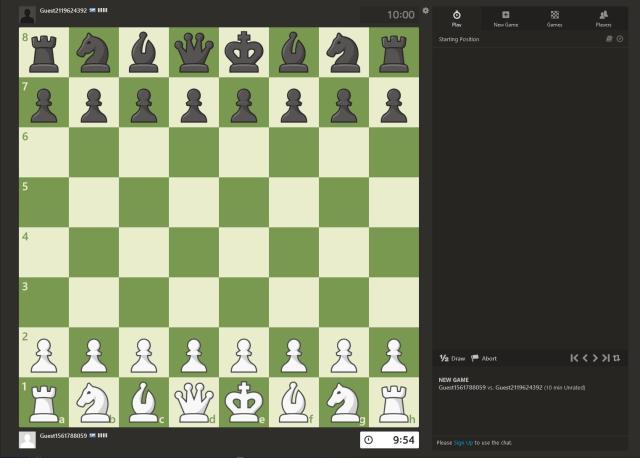Best Move in Algebraic Chess Notation – The Password Game Rule 16
And that's how a pro chess player is born

If you’ve made it past Rule 14, you’ll need to learn chess rules. Rule 16 in The Password Game states, “Your password must include the best move in algebraic chess notation.” It’s arguably the most complicated rule in the game. Don’t worry, we’ll show you how to solve it below.
How to Discover the Best Move in Algebraic Chess Notation in The Password Game: Rule 16
In order to beat Rule 16 in The Password Game, you need to discover the best move in algebraic chess notation, which is the standard method for writing a specific move you can do on a chess board. Click on the highlighted text on the Password Game page to find out more about what Algebraic Chess Notation is, but all you need to know is how to identify it.
A notation can represent any type of move. Be5 simply indicates a Bishop moving to E5, but Bxe5 indicates a Bishop capturing another piece in E5 before taking its place. The best move in the Password Game will often include capturing another piece.
With that format in hands, let’s solve the following Rule 16 example:

You might arrive at the correct result, but the best way to make sure of that is by visiting Next Chess Move. This website (which also has an APK for mobile devices) calculates the best next move depending on your current board. So all you gotta do is recreate the same situation on this site and hit “Calculate Next Move.” Just like this:

And with that, we get our answer as Rd8+. Let’s see if it works out…

We did it, let’s go! Some other rules were broken in the process, but it’s easy to fix them. Or at least it should be. Just remove some numbers and older letters as needed. Regardless of that, the worst part is done. Just be careful not to drown in hot waters within just a few Rules. You’ll get what we mean soon enough.
SPECIAL OFFER: Earn Money By Playing Games With Pogo
Can You Get the Wrong Result for Rule 16 in The Password Game?
Although rare, your result might not be the answer you need. In that case, try again and see which of the next moves would be the next “best move.” One of them is guaranteed to be your correct answer. NextChessMove will be accurate most of the time, so you might not even go through these issues.
If you have to restart the game for some reason, don’t forget that the other big roadblock in Rule 14 is also easy to overcome once you use all the tools at your disposal. And you have a lot of them, don’t forget that.
Chess Notations Explained
Chess Notations are simply a record of the moves committed in any chess game. Instead of writing them out in a normal language, notations shorthand moves made in a match to simple numbers and letters.
You have to know a few things about chess notation before understanding it. First, abbreviations in notation style are always capitalized. For example, the letter “K” is for the king piece, the letter “Q” is for the queen piece, and so on. Some pieces have special notation letters, however. Here’s the notation for every chess piece.
- “K” – King.
- “Q” – Queen.
- “R” – Rook.
- “B” – Bishop.
- “N” – Knight.
- Pawn – no notation.

Each square on a chess board has its own notation based on a graph. For example, on the photo above, white’s rook piece on the bottom left side is on the square a1, so the notation reads as “a1.” Likewise, if we move a piece to square e4, the notation would be “e4.”
If a rook piece moved to e4 on turn 8, it would be written out as this: 8. Re4. The turn number comes first, then the piece’s notation, then the chessboard spot. Pawns don’t have any notation, so a pawn moving to e4 would just be written as “e4.”
Hopefully, our guide helped you to find the best move in algebraic chess notation for The Password Game Rule 16. You can check out our guide on How To Beat Rule 18 or check our list of all All Rules in The Password Game
